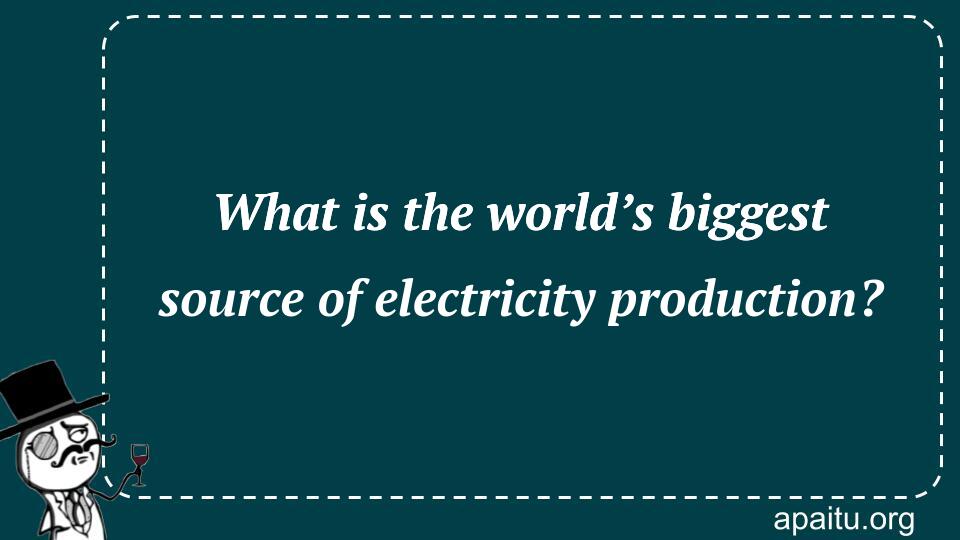Question
Here is the question : WHAT IS THE WORLD’S BIGGEST SOURCE OF ELECTRICITY PRODUCTION?
Option
Here is the option for the question :
- Water
- Wind
- Coal
- Sun
The Answer:
And, the answer for the the question is :
Explanation:
The majority of the world’s energy comes from the burning of coal. The water in a large furnace is brought to a rolling boil by the burning of coal. This water, when heated to a high enough temperature, generates steam, which in turn turns turbines, which in turn puts generators and transformers into motion. The electricity that is produced is then fed into the national power grid.

Coal, a fossil fuel formed from the remains of plants that lived and died millions of years ago, has long been the world’s biggest source of electricity production. Its widespread availability, affordability, and energy density have made it a favored fuel for power generation in many countries across the globe.
Coal-fired power plants have played a significant role in meeting the growing demand for electricity. These power plants generate electricity by burning coal to produce steam, which drives turbines connected to generators. The process of coal combustion releases energy in the form of heat, which is then converted into electrical energy.
The dominance of coal in electricity production can be attributed to several factors. Firstly, coal reserves are abundant in many countries, making it a reliable and easily accessible source of fuel. This has provided energy security to nations and reduced their dependence on imported energy resources.
Secondly, coal has historically been a cost-effective option for electricity generation. The infrastructure and technology required for coal-fired power plants are well-established and relatively affordable compared to alternative energy sources. This has made coal an attractive choice, particularly in regions where other energy resources are scarce or expensive.
However, it is important to acknowledge the environmental impact associated with coal-based electricity production. The combustion of coal releases various pollutants into the atmosphere, including carbon dioxide (CO2), sulfur dioxide (SO2), nitrogen oxides (NOx), and particulate matter. These emissions contribute to air pollution, acid rain, and the greenhouse effect, leading to climate change and adverse health effects.
In recent years, there has been a growing recognition of the need to transition away from coal and towards cleaner and more sustainable energy sources. The environmental concerns associated with coal combustion, along with advancements in renewable energy technologies, have fueled efforts to diversify the electricity generation mix.
Countries around the world are increasingly investing in renewable energy sources such as solar, wind, hydroelectric, and geothermal power. These sources offer significant advantages over coal in terms of reduced greenhouse gas emissions, improved air quality, and long-term sustainability. Additionally, the declining costs of renewable technologies have made them increasingly competitive with coal in many regions.
The transition from coal to cleaner energy sources is not without challenges. Coal-fired power plants often provide jobs and economic stability in coal-mining regions, and the shift away from coal can have social and economic implications. Therefore, a just and equitable transition that considers the needs of affected communities is crucial.
To accelerate the transition to a more sustainable energy future, governments, industries, and communities must work together to im